Approaching the Tort Shalbaz complex from the road, it appears nothing more than a long brick building with a few cupolas. Similarly the madrassah entrance from the street contains a nondescript courtyard and a small library. However a stroll behind the complex reveals one of the most serene and pleasantly unrestored ensembles in Khiva
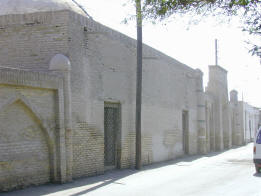 View from the street
View from the street
Built by Abdullah Khan in the 1850's, the complex is named after the four ('tort') falcons or heroes ('shalbaz') that lie buried here. It includes a large cistern which is still full of water standing next to a dried-up 'hauz' (pool) where dervishes (Muslim pilgrims) and other holy men would sit under the shade of overhanging trees. It was here that Vambery, the Hungarian explorer, was accommodated whilst in disguise as a dervish from Istanbul.
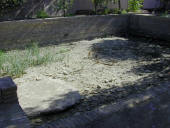 Dried Hauz
Dried Hauz
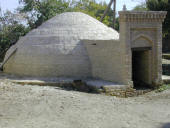 Cistern
Cistern
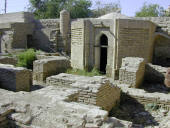 Mausoleum
Mausoleum
"The Tort Shalbaz or convent that gave us shelter, from the great reservoir of water and mosque which it encloses, was looked upon in the light of a public place... Although at the beginning of June the heat was here unusually oppressive, I was nevertheless forced to keep my cell, although it was without windows, for immediately I issued forth and betook myself of the inviting shade, I was surrounded by a crowd, and plagued to death with the most stupid enquiries. One wanted religious instruction; another asked if the world offered elsewhere places as beautiful as Khiva; a third wished, once for all, authentic information whether the Great Sultan really had his each day's dinner and supper forwarded to him from Mecca, and whether they passed from the kaaba in one minute. Ah! If the good Ozbeks only knew how much Chateau Lafitte and Margot garnished the sovereign's table during the reign of Abdul Medjid!" Arminius Vambery 'Travels in Central Asia' 1864
Next to the cistern and hauz stands a well proportioned minaret and a a large aywan for summer prayers with tasteful alabaster decorations. There is also an enclosed winter mosque which is now the office of the local 'mahallah' (neighbourhood) women's committee.
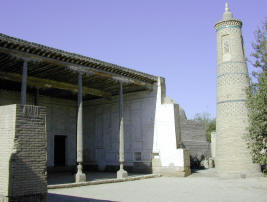 Ensemble
Ensemble
One of the committee's oldest members tells how her father-in-law studied at the adjacent madrassah. He was a member of the Basmachi Islamic resistance fighters during the 1920's and, when the Basmachis were rounded up by the communists, he and a friend claimed sanctuary in the complex. They stayed there for months and finally her father-in-law stated that since he was going to die anyway he had no intention of spending the rest of his life cooped up in hiding. The next day he made his escape while his friend decided to remain. That night the communists decided to raid the Tort Shalbaz and shot his friend, whilst he stayed on the run for another five years before eventually being captured and killed.
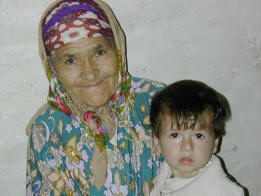 Granny guide
Granny guide
The old granny still attends the mahallah meetings and every Wednesday prays at the tomb of the four falcons. She also brings ten buckets every morning and evening to water the gnarled old tree that twists its way through the tiny courtyard of the madrassah. Here, out of reach from Soviet restoration, the Tort Shalbaz manages to retain a sense of the holy community it once was.
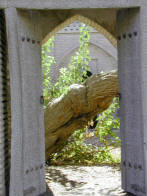
 View from the street
View from the street Dried Hauz
Dried Hauz Cistern
Cistern Mausoleum
Mausoleum Ensemble
Ensemble Granny guide
Granny guide


